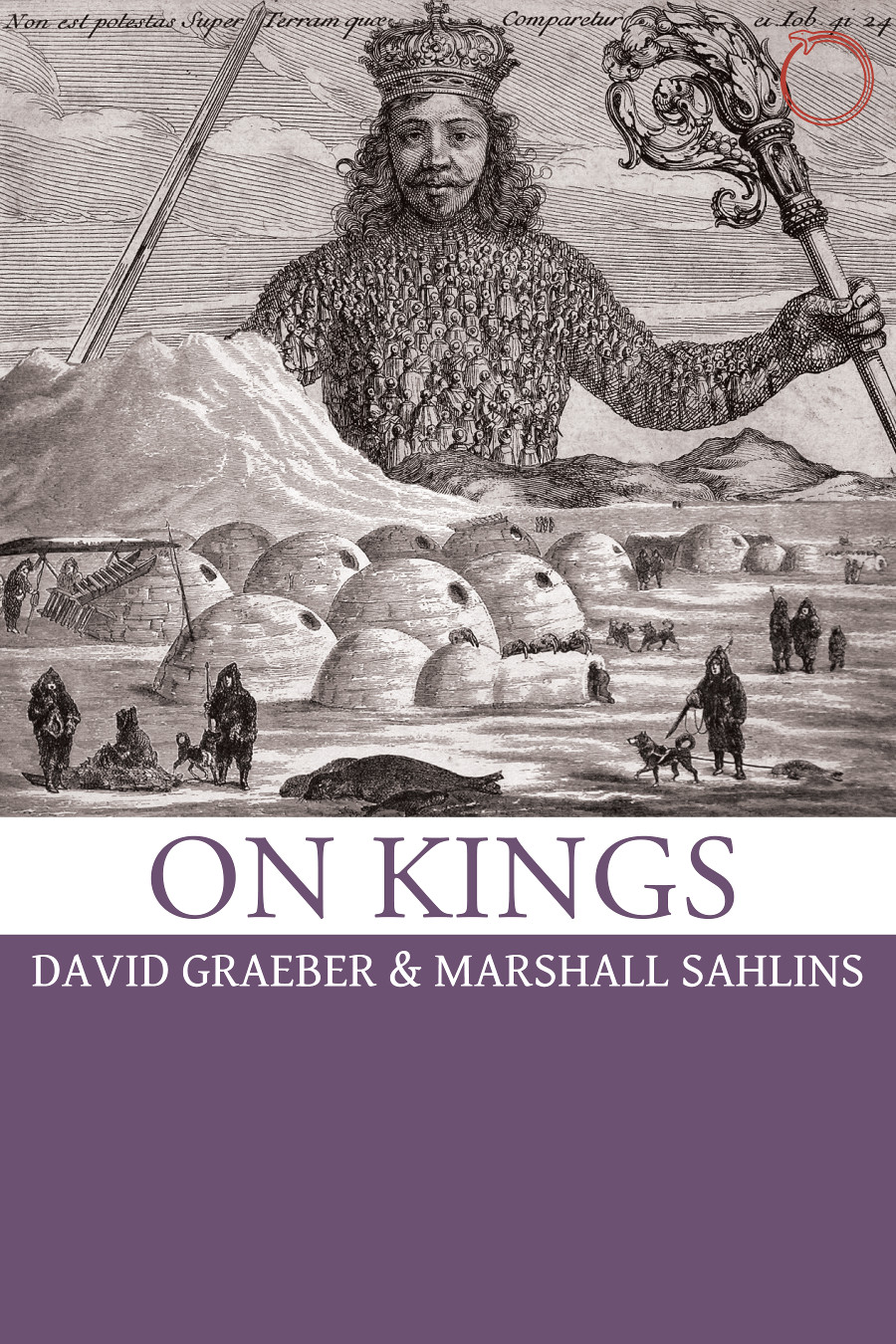David Graeber, Marshall Sahlins: On Kings (2017)
Filed under book | Tags: · anthropology, authority, kinship, labour, myth, politics, production, ritual, royalty, sovereignty, state, violence

“In anthropology as much as in popular imagination, kings are figures of fascination and intrigue, heroes or tyrants in ways presidents and prime ministers can never be. This collection of essays by two of the world’s most distinguished anthropologists—David Graeber and Marshall Sahlins—explores what kingship actually is, historically and anthropologically. As they show, kings are symbols for more than just sovereignty: indeed, the study of kingship offers a unique window into fundamental dilemmas concerning the very nature of power, meaning, and the human condition.
Reflecting on issues such as temporality, alterity, and utopia—not to mention the divine, the strange, the numinous, and the bestial—Graeber and Sahlins explore the role of kings as they have existed around the world, from the BaKongo to the Aztec to the Shilluk and beyond. Richly delivered with the wit and sharp analysis characteristic of Graeber and Sahlins, this book opens up new avenues for the anthropological study of this fascinating and ubiquitous political figure.”
Publisher HAU Books, Chicago, 2017
Creative Commons BY License
ISBN 0986132500, 9780986132506
xv+536 pages
Roberto González Echevarría: Myth and Archive: A Theory of Latin American Narrative (1990–) [EN, ES]
Filed under book | Tags: · anthropology, archive, christianity, city, history, history of literature, latin america, law, literary theory, literature, myth, narrative, rhetoric, violence, writing

“This book offers a theory about the origin and evolution of the Latin American narrative, and about the emergence of the modern novel. It argues that the novel developed from the discourse of the law in the Spanish Empire during the sixteenth century, while many of the early historical documents concerning the New World assumed the same forms, furnished by the notarial arts. Thus, both the novel and these first Latin American narratives imitated the language of authority. The book explores how the same process is repeated in two key moments in the history of the Latin American narrative. In the nineteenth century, the model was the discourse of scientific travellers such as von Humboldt and Darwin, while in the twentieth century, the discourse of anthropology – the study of language and myth – has come to shape the narrative. Professor González Echevarría’s theoretical approach is drawn from a reading of Carpentier’s Los pasos perdidos, and the book centres on major figures in the tradition such as Columbus, Garcilaso el Inca, Sarmiento, Gallegos, Borges and Garcia Marquez.”
Publisher Cambridge University Press, 1990
ISBN 0521023998, 9780521023993
245 pages
Review (Terry J. Peavler, Latin American Research Review, c1990, EN)
Review (Margarita Zamora, Hispanic Review, 1992, EN)
Review (Adriana Gordillo, Fronteras de la historia, 2003, ES)
Publisher (EN)
WorldCat (EN)
WorldCat (ES)
Myth and Archive (PDF), PDF (English, 1990)
Mito y archivo: una teoría de la narrativa latinoamericana (Spanish, trans. Virginia Aguirre Muñoz, PDF, 77 MB, via Academia.edu)
Mark Rothko: The Artist’s Reality: Philosophies of Art (2004)
Filed under book | Tags: · abstraction, art, art theory, beauty, colour, environment, light, myth, painting, philosophy of art, reality, renaissance, representation, space, symbolism

“One of the most important artists of the twentieth century, Mark Rothko (1903–1970) created a new and impassioned form of abstract painting over the course of his career. Rothko also wrote a number of essays and critical reviews during his lifetime. Although the artist never published a book of his views, his heirs indicate that he occasionally spoke of the existence of such a manuscript to friends and colleagues. Stored in a New York City warehouse since the artist’s death more than thirty years ago, this manuscript, titled The Artist’s Reality, is now being published for the first time.
Probably written around 1940–41, this book discusses Rothko’s ideas on the modern art world, art history, myth, beauty, the challenges of being an artist in society, the true nature of “American art,” and much more. The Artist’s Reality also includes an introduction by Christopher Rothko, the artist’s son, who describes the discovery of the manuscript and the process of bringing it to publication. The introduction is illustrated with a small selection of relevant examples of the artist’s own work as well as with reproductions of pages from the actual manuscript.”
Edited and with an Introduction by Christopher Rothko
Publisher Yale University Press, 2004
ISBN 0300115857, 9780300115857
136 pages

